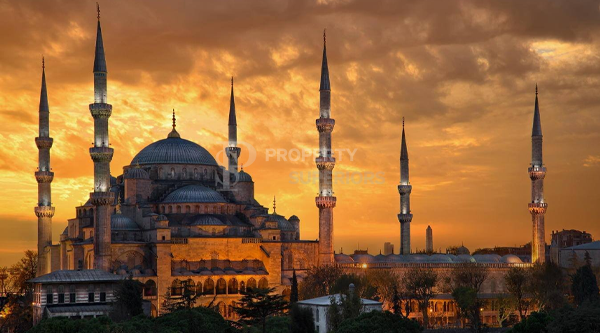
From history to today, Istanbul's Old City perfectly embodies the cultural and historical importance of Turkey. The destination that has shaped Turkey today seems quite different from other fast-growing cities. An air of nostalgia hangs over the old part of Istanbul known as the Mosque, and if you stop and think about it, it's easy to imagine the different events that took place over the centuries. What was once a precious jewel of city walls and invading armies is now Turkey's premier tourist attraction. Reflecting Ottoman history and the capital of the Byzantine Empire, this status also makes Sultanahmet attractive for Turkish real estate, with some of the highest prices nearby, while others with a rich history are preserved for future generations.
About the Mosque - Istanbul Old City
Where is the old city of Istanbul?
The Old City of Istanbul is located on the European side of the Bosphorus. Also known as Istanbul's Historic Peninsula, the Old City includes several historic districts, including the Mosque, Fatih, and Balat. The Sultanahmet district is the heart of Old Istanbul and is home to important historical attractions such as the Blue Mosque, Hagia Sophia and Topkapi Palace. The cobbled streets, ancient city walls and historic buildings surrounding the Old City of the Mosque make exploring the area a joy.
Byzantine Emperor Who Built the Old City
Istanbul was the capital of the Byzantine Empire, and all Byzantine emperors ruled from the city. The Roman Emperor Constantine (306-337) made Constantinople the new capital of the Roman Empire. Notable successors who also ruled from here include…
- The Roman Emperor Justinian I (527-565) commissioned the construction of the Hagia Sophia.
- Basil II (976-1025), expanded and strengthened Byzantium's military power.
- Constantine XI (1449-1453), the last Byzantine emperor, ruled until the Ottoman conquest.
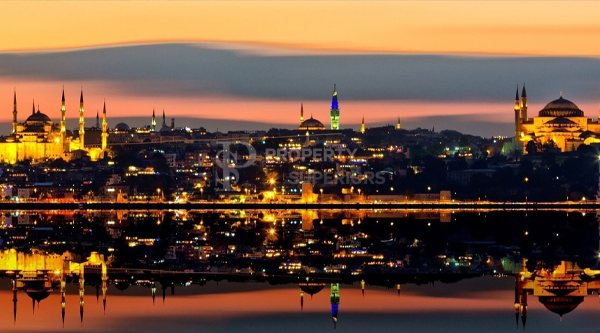
Ottoman conquest of the old city
The Ottoman Empire, under Sultan Mehmet II, conquered Constantinople in 1453, besieging it for several weeks and breaching its walls. This momentous event ended the Byzantine Empire and marked its expansion into Europe. Furthermore, the conquest of Constantinople gave the Ottomans control of the Bosporus between the Black Sea and the Sea of Marmara, and gave them great Byzantine wealth and power. After the victory, the Ottoman Turks turned the old city into their new capital.
Istanbul Blue Mosque
The historic Blue Mosque, also known as the Sultanahmet Mosque, is located in Sultanahmet Square. Commissioned by Sultan Ahmed I in the 17th century, the Blue Mosque (Sultanahmet Camii) is famous for its intricate blue tiles, from which the Blue Mosque takes its name. The Blue Mosque emphasizes a royal mosque that mixes traditional Islamic and Byzantine styles. With six minarets and a 43-meter-high central dome, 20,000 blue tiles imported from Iznik cover the interior walls, domes and arches and are synonymous with the mosque and Masjid Square. They also accentuate the intricate calligraphy and other decorative elements of the Blue Mosque. Ultimately, the blue Sultanahmet Mosque symbolizes the power of the Ottoman Empire and Islamic culture.
Hagia Sophia in Istanbul Old City
Originally a Byzantine 6th-century Hagia Sophia, it was converted into a mosque after the Ottoman conquest of Constantinople. In 1935, the Hagia Sophia became a museum until it was converted back into a mosque in 2020. The Hagia Sophia beautifies Byzantine architecture with its colossal domes and intricate mosaics depicting biblical scenes, geometric designs and calligraphy. Hagia Sophia's long and rich history as a Byzantine religious center and as an Ottoman mosque makes the mosque landmark a rare gem.
Turkish bath in the old town
Several historic hammams in Sultanahmet reflect the cultural and architectural heritage of the Ottoman era, attracting both Turkish citizens and tourists. Admire the bathroom's intricate tiling, marble columns and vaulted ceilings while enjoying traditional rituals such as steam baths and massages. The best hammam in Sultanahmet is Ayasofya Hurrem Sultan Hamam.
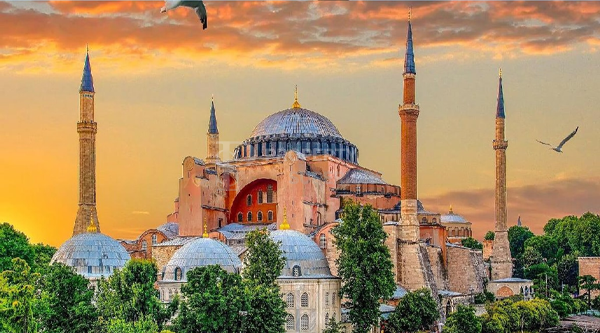
Old Istanbul and the Golden Horn
The Golden Horn is a natural harbor built along the Bosporus Strait in the shape of a unique horn. It is located in Istanbul, Europe, and borders the Sultanahmet district. The Golden Horn has been an important port and port for centuries. The key strategic position during the Ottoman Empire and the walls and fortifications built along the coast protected the city from invasion. The Golden Horn offers stunning views and opportunities to explore villages and regions. Visitors can take a ferry, cross the Galata Bridge into the new Istanbul, or visit the seaside neighborhoods and mosques.
How to See Istanbul's Old City Walls
The outer walls of Istanbul, known as the Theodosian Wall, are defensive structures that have surrounded the city for centuries. Tourists can explore the rest of Istanbul in different locations to gain insight into the history and architecture of the city. Another popular place to see walls repaired is Yedikule. In addition, the Istanbul Archaeological Museum displays sections along with other artifacts and exhibits.
The Golden Gate of Constantinople is an arch in the city wall. Built by the Byzantine emperor Theodosius II in the 4th century AD, the Golden Gate is the main western entrance and the ceremonial gateway used for state processions. The original gate, decorated with intricate sculptures, columns and bas-reliefs, no longer exists, but its foundations remain in Istanbul's present-day walls near Topkapi Palace. The Golden Gate of Constantinople reflects Istanbul's Byzantine history and heritage.
Is Sultanahmet a good place to stay?
If your sole purpose in visiting Istanbul is to see ancient landmarks, mosques are the place to be. Conveniently located near Istanbul's most famous landmarks, including the Blue Mosque, Hagia Sophia and Topkapi Palace, Sultanahmet is ideal. Plus, the walking distance between major attractions makes sightseeing on foot easy, without the need for public transport. Sultanahmet also offers a variety of accommodation options from budget hostels to luxury hotels.
Grand Bazaar
One of the largest and oldest indoor markets in the world, the Grand Bazaar has been a center of trade and commerce for centuries. The Grand Bazaar includes more than 60 streets and more than 4,000 shops offering a wide range of goods including jewellery, textiles, ceramics, spices and souvenirs. This vibrant shopping area is great for haggling, sampling local delicacies and buying souvenirs. The Grand Bazaar is open daily, but be prepared for crowds, especially on weekends and during high season.
The Basilica Cistern of Sultanahmet
The 6th-century underground cisterns supplied Constantinople with water. The scientific and technological reservoir has a total length of 140 meters and an area of 9,800 square meters. Three hundred and thirty-six marble columns, with clear water and many fish, support the pool. Open to the public daily, visitors walk on an elevated wooden platform leading to the Cistern, which houses two marble columns with fascinating carvings, including the head of Medusa.
Constantinople Byzantine Grand Palace
The Great Palace of Constantinople in the Byzantine era was the seat of the emperor and administrative center. In addition, the Grand Palace also has many buildings, gardens and courtyards, such as offices, entertainment halls, living areas, chapels and bathrooms, covering an area of 30 hectares. Built in the 4th century AD, the Grand Palace underwent several extensions and renovations to reflect the changing needs and styles of the emperors. One of the most opulent palaces in the world, the majestic palace cries out for royalty. Today, the Grand Palace and the royal residence are no more, but what historians know can give them insight into Byzantine history, architecture, and way of life.
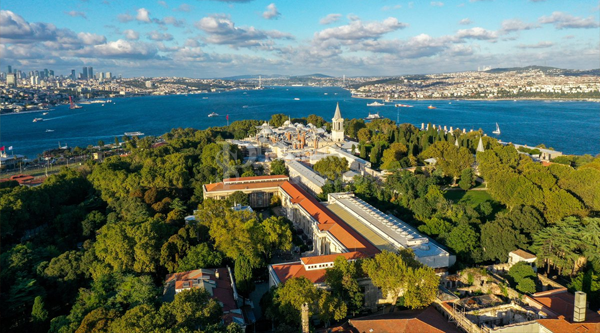
Topkapi Palace and Royal Residences
The Ottoman sultans lived and ruled at Topkapi Palace for nearly 400 years. Overlooking the Bosphorus, the palace has multiple courtyards, gardens and buildings, including the Harem, Imperial Chamber and Treasury, and houses an impressive collection of Islamic art and artifacts, including Ottoman manuscripts, jewelry and ceramics.
The Imperial Treasury, known as the Holy Vault, held the wealth of the Ottoman Empire, including gold, silver, jewelry, and other valuables. Mehmed the Conqueror built the imperial treasury, which expanded over the centuries to include gifts from other rulers and items acquired through conquest, such as the Spoonmaker's Diamond, the Kashyyyk Diamond and the Topkapi dagger.
Sultan Ahmed III added magnificent buildings and gardens to Topkapi Palace. Sultan Ahmed III is known for promoting the Tulip Age through architecture. Topkapi Palace underwent several extensions and renovations under Sultan Suleiman the Magnificent. Suleiman the Magnificent ruled from 1520 to 1566, during which time he acquired great power and wealth.
St. Elena's Church in the outer courtyard of Topkapi Palace was once a mosque and museum, but now hosts events. Hagia Irene's unique blend of Byzantine and Classical architectural styles is characterized by a central dome surrounded by smaller domes and half domes supported by suspended ceilings. Intricate mosaics and marble floors adorn the interior. The architectural style of St. Elena represents Byzantine artistic and architectural heritage.
The Imperial Gate is the main entrance to Topkapi Palace. The Imperial Gate, the ornate structure through which the sultans entered and exited the palace, is decorated with elaborate tiles, calligraphy and reliefs, reflecting the decorative arts of the Ottoman Empire.
Istanbul Archaeological Museum
The Istanbul Archaeological Museum displays and preserves artifacts and artworks from ancient Mediterranean and Middle Eastern cultures. Founded in 1891, the Archaeological Museum includes collections from ancient civilizations of Greece, Rome, Egypt, Mesopotamia and Ottoman rule. The museum houses the sarcophagus of Alexander the Great, the Sphinx of Tanis and the sarcophagus of the Weeping Woman. In addition, the museum has a large collection of ceramics, metalwork, Islamic art, glassware, coins, seals and manuscripts from various historical periods, reflecting the ancient East.
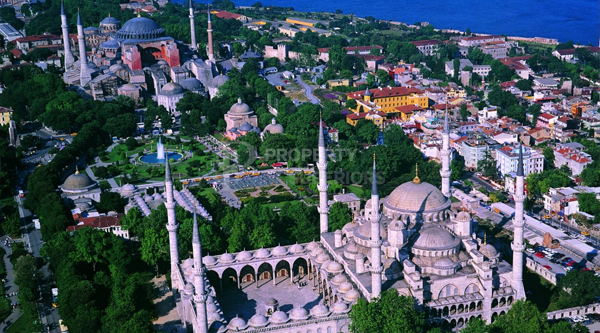
The German Fountain of Sultanahmet
Germany donated mosque fountains in the 19th century. Made of marble and bronze and decorated with reliefs depicting scenes from German and Turkish mythology, the German Fountain is notable for its architecture, historical importance and location. The German Fountain, which can be seen from afar, is a testament to the deep cultural ties between Turkey and Germany.
Egyptian obelisk in the Colosseum
The Wall Obelisk, also known as the Egyptian Obelisk, was originally built around 1500 BC. Built in ancient Egypt at Thebes, it was later brought to Constantinople in the 4th century AD. Sultanahmet's 25-meter-high red granite Egyptian obelisk features hieroglyphs and reliefs depicting scenes from Egyptian mythology. Visitors to Sultanhamet can see the building at the old hippodrome next to the Blue Mosque.
Final Thoughts and Review of Old Istanbul
Unfortunately, the downfall of Sultan Ahmed's royal family began in the 19th century. Ottoman Sultan Abdul Mecht moved his official royal palace to Dolmabahce, across the Golden Horn and the Galata Bridge. Dolmabahce Palace showcases the Ottoman Rococo and Baroque styles of that period. The Dolmabahçe courtyard was lined with golden, expensive carpets and tiles, but this status did not last long as the new Turkish Republic dissolved the Ottoman sultans in the early 20th century. They also moved the capital from Istanbul to Ankara.
However, when we look at the history of the old city of Istanbul, from Byzantine rule to successive Ottoman emperors, Islamic art and iconic buildings such as the Blue Mosque and Hagia Sophia, the importance of Istanbul is undeniable. Today, Sultanahmet and Faith districts are among the best real estate areas in Istanbul. Given its high tourist status, many properties for sale in Fatih are accommodation options. But there is no doubt that the splendor of Istanbul's old city continues.
Related posts:
The goal of many people who want to own real estate in Turkey is to obtain an ideal apartment in Turkey within the city of Istanbul or any other Turkish city, and buyers focus on several factors that they want...
Buying a property in Turkey is not a difficult or complicated process or requires bureaucratic procedures. Rather, it is done through simple steps that lead to the new owner obtaining the Tabu document, which shows that he has the legal...




 New provisions for obtaining Turkish citizenship through real estate ownership
New provisions for obtaining Turkish citizenship through real estate ownership
 Turkish Real Estate Rental Law 2024
Turkish Real Estate Rental Law 2024
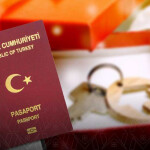 Ways to obtain Turkish citizenship through investment 2024
Ways to obtain Turkish citizenship through investment 2024
 How to choose an ideal apartment in Turkiye?
How to choose an ideal apartment in Turkiye?
 Turkish passport... Extraction method and fees 2024
Turkish passport... Extraction method and fees 2024
